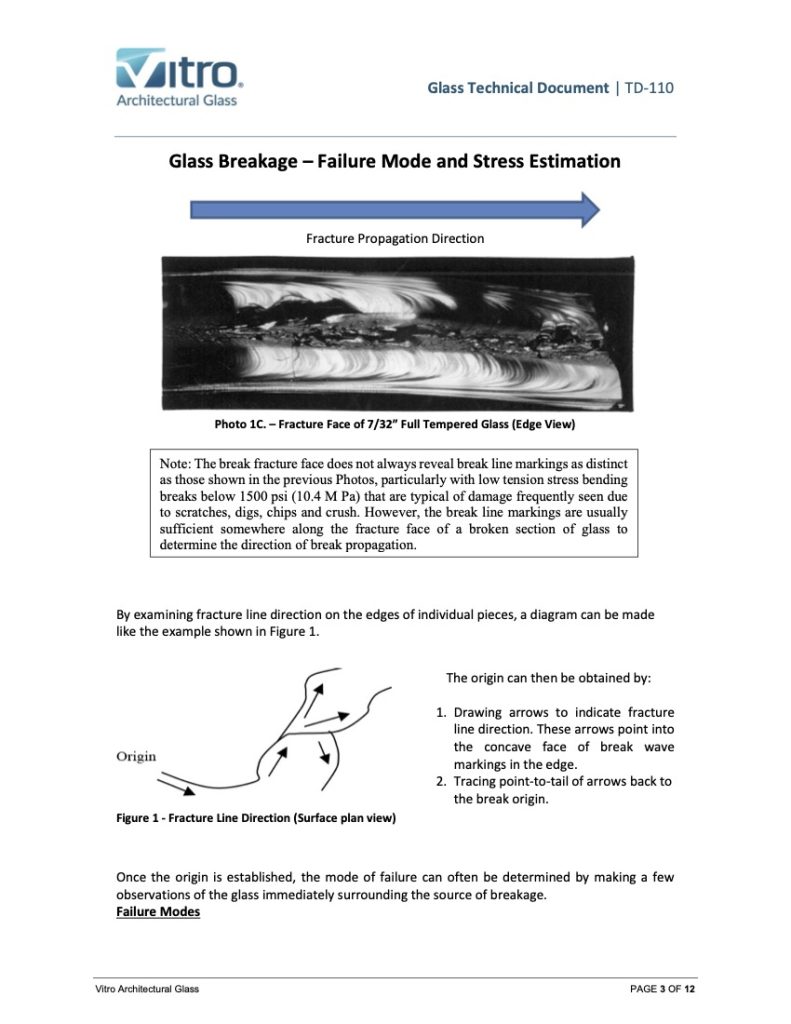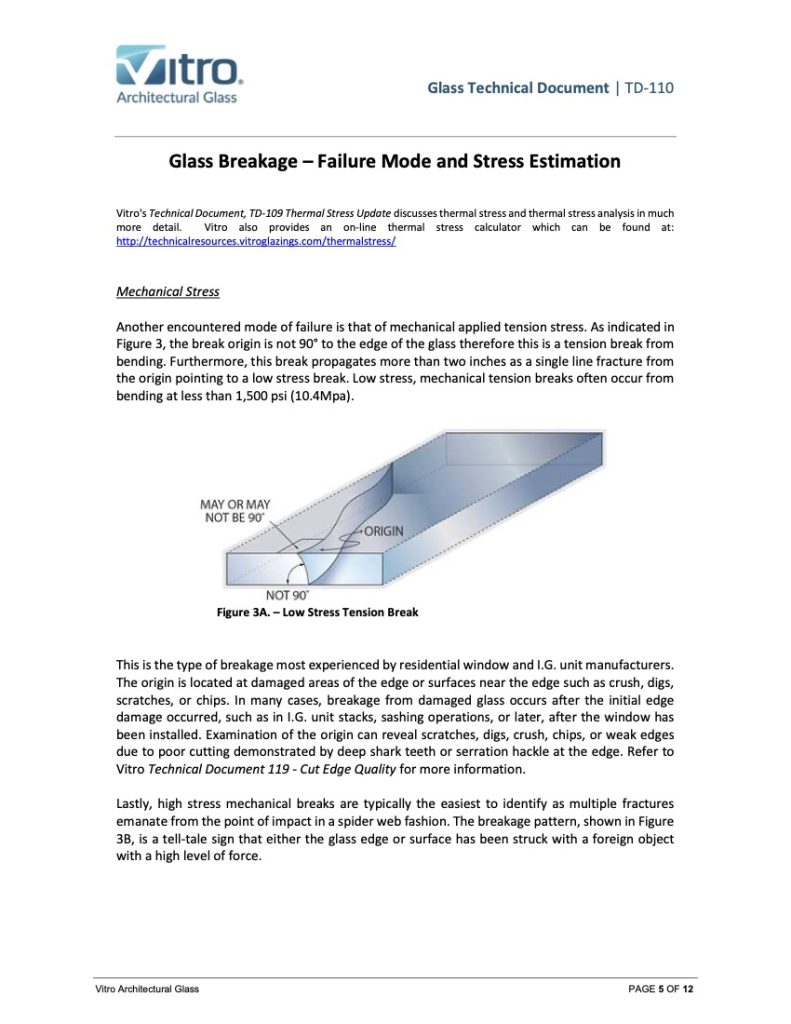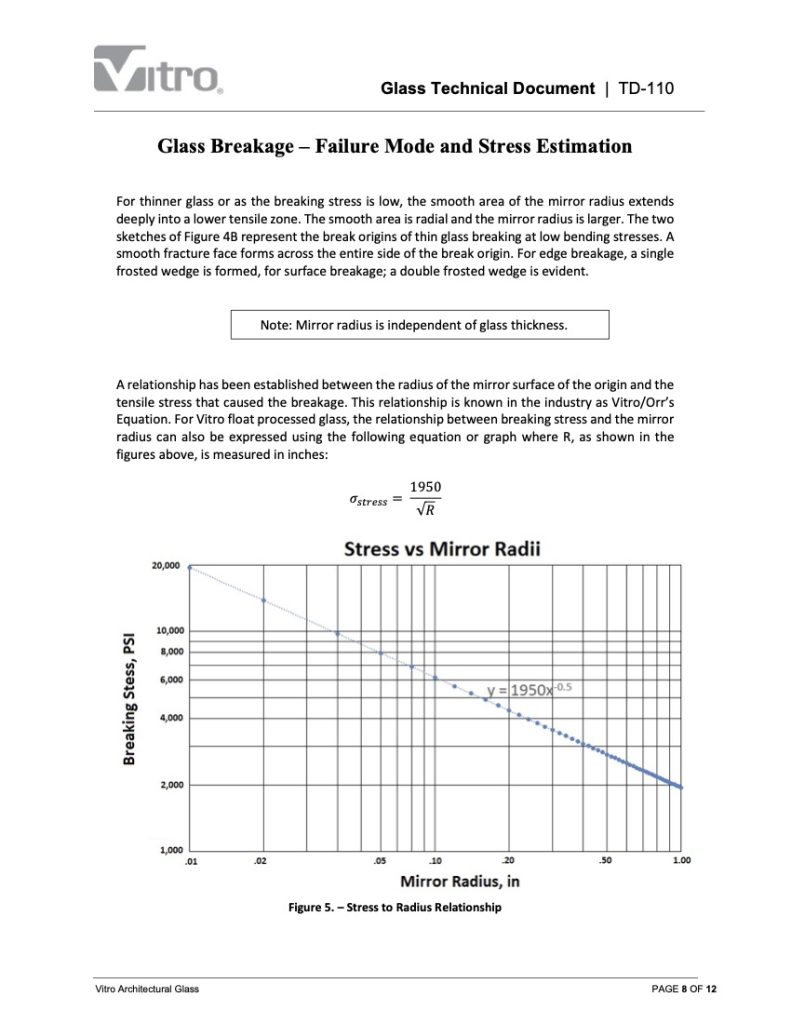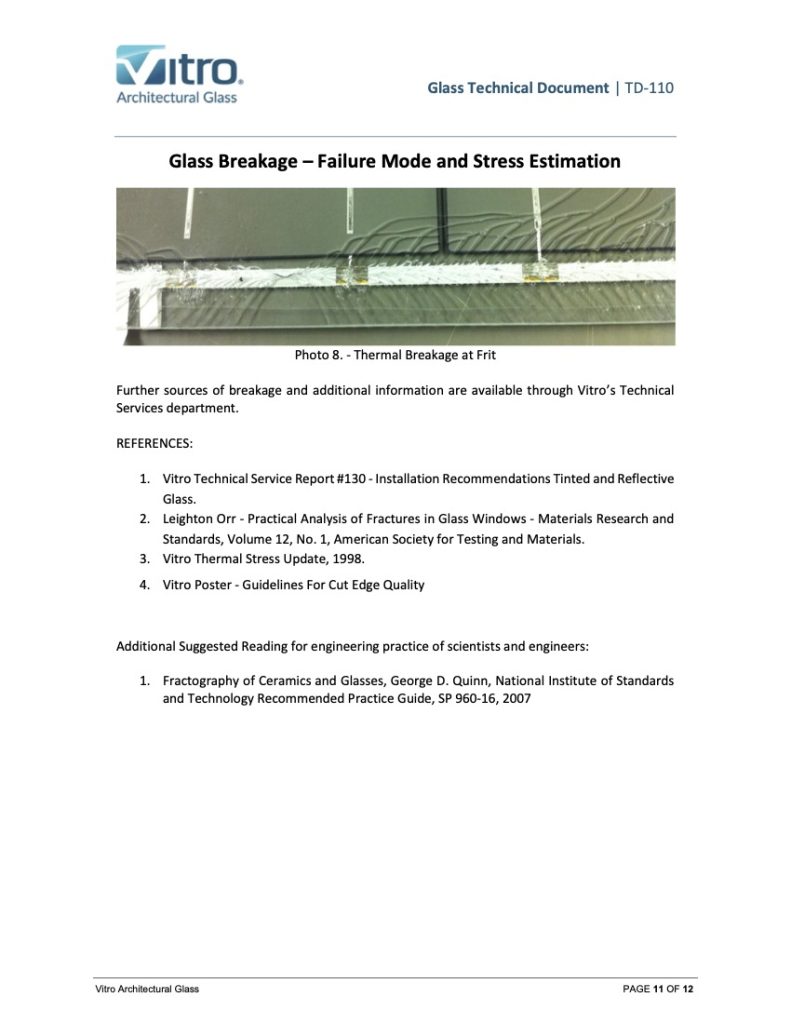
Glass Breakage-Failure Mode and Estimation
2022/06/13Microsoft Word – Vitro TD-110 – Glass Breakage – Failure Mode and Stress Estimation – v.7.docx
In most cases, forensic analysis of the fracture origin, also known as the break origin, can provide useful information about the glass breakage and often the root cause of the breakage.
If the break origin is obtained, analysis by experts can often provide:
- The mode of failure; such as by bending, thermal, pure tension, torsional, peel chip, etc.,
- The stress or tension level at which the glass breakage occurred and
- The cause of the breakage, e.g. impact, crush or digs caused by glass-to-glass or glass-to- metal contact, chips, edge or surface damage, or scratches. This document discusses various modes of failure and is intended to provide the user a method with which an estimation of the stress levels that caused breakage can be determined. Glass, like many brittle materials, breaks or fails when tension stresses approach or exceed the materials ultimate strength. There are two primary modes of glass failure. Breakage due to thermally induced stress (temperature difference within the glass) and breakage due to the tensile forces developed as a result of bending or impact (mechanical). A common cause of breakage is damage to the edge of the glass. Edge damage can significantly reduce the strength of the glass by more than 50% and therefore its ability to resist both thermal and mechanical loads. Glass with existing edge damage could be functional for any amount of time until the necessary combination of thermal stress and/or mechanical loading conditions come together causing breakage. Origin Traceability The first step in breakage analysis is determining the origin or location where the breakage was initiated. The location of the break origin can often be determined if pieces of the broken light can be retained or reassembled into their pre-break orientation. Lines of fracture called “Wallner Lines” begin at the origin and radiate along break branches. When breakage occurs due to poor or damaged edges, the break origin will be at the edge of the glass where the damage was present. The direction of fracture can be determined by examining the lines on the fracture face as shown by the three different examples on the following page. Whether annealed, heat strengthened, full thermally tempered, or chemically strengthened, regardless of failure mode, breaks always project into the concave face of these markings. The three samples in Photo 1 all broke from the left to right direction as shown.













